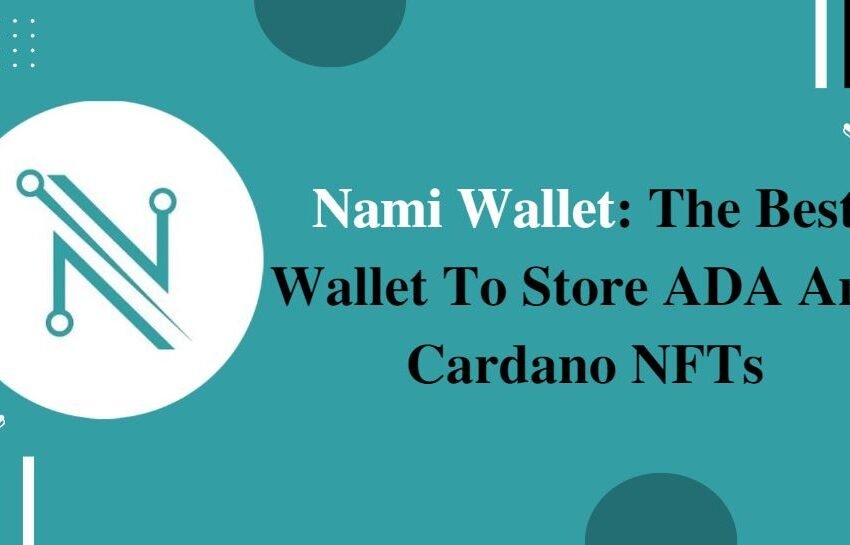What Is A Cryptocurrency? A Beginner’s Guide to Understanding Cryptocurrencies
What Is A Cryptocurrency?

Whether you’re a beginner or a knowledgable cryptocurrency enthusiast, in this piece, you will learn
- Historical Background
- What is Cryptocurrency
- Features & Use-cases
- Legal issues around cryptocurrencies
- How to Safely store cryptocurrencies
Let’s dive in
Historical Background
When you think of cryptocurrencies, popularly called Crypto for short, one of the first things that come to mind is Bitcoin and by extension, Satoshi Nakamoto. Such thoughts are not out of place . Hence there have been numerous attempts to create a digital currency that possesses the undying nature of cryptocurrencies. But every attempt to realize this “lofty” dream failed at successive turns. It appeared as though this vision would never be achieved.
However, the birth of the internet in 1990 made the concept of digital money possible. Beyond our wildest imaginations, new forms of payment could exist — intangibly — in purely electronic form. As Milton Friedman puts it.
Some of such notable examples include DigiCash by David Chaum in 1992, E-gold by Douglas Jackson in 1996. And in 1998, the cryptography czar, Nick Szabo designed a mechanism for a decentralized digital currency. He called it “bit gold” which however couldn’t take off like its successor as we have seen.
Satoshi Nakamoto, a pseudonymous entity after a decade since the bit gold experiment created the first-ever cryptocurrency – Bitcoin. It was the same time the global financial recession rocked the world in 2008. Bitcoin network went live by the 3rd of January 2009.
… after more than a decade of failed Trusted Third Party based systems (Digicash, etc), they see it as a lost cause. I hope they can make the distinction, that this is the first time I know of that we’re trying a non-trust-based system. — Satoshi Nakamoto in an E-Mail to Dustin Trammell
Since then, many other cryptocurrencies have been created some of which have not stood the test of time like Bitcoin is doing.
What are Cryptocurrencies?
Cryptocurrency is an internet-based medium of exchange which employs cryptography (a strong encryption technique) to facilitate financial transactions. Using blockchain technology, cryptocurrencies achieve this feat through decentralization, transparency and immutability. These are the true qualities of a public ledger.
Before bitcoin’s establishment, the major problem with any payment network was the dilemma of double-spending. This allowed users of any such payment network to spend their digital currency twice or even more in a fraudulent manner. Double-spending of any currency is also the same as digital counterfeiting. To mitigate this from happening, the traditional approach was to employ the services of a third-party. This meant having a central server in place to check for such frauds. But with third-party acting, as a gatekeeper always meant your funds with all your details are controlled by someone else. From history, this has not always played out well when third parties act of their selfish interests.
“Did you know the first successful cryptocurrency bitcoin, was created in 2009 by a pseudonymous entity called Satoshi Nakamoto?”
Government do not control or fix bitcoin’s supply. Satoshi’s genius mind ensured the currency is decentralized. Individuals are vested with the authority to monitor the economy created by the activities of cryptocurrencies.This is because it runs on a peer-to-peer internet protocol. The individual units that make up a cryptocurrency are encrypted strings of data that have been encoded to represent one unit.
How Are Cryptocurrencies Created?
A typical cryptocurrency like bitcoin is created by a process called Mining. Block mining is the process of attaching new transaction records (files of data) as blocks to the existing chain of blocks .This is now called the blockchain. In the process as typical of the bitcoin example, new bitcoins get produced, adding to the total number of coins in circulation.
Mining requires a specific piece of software that is used to solve mathematical puzzles. It validates the legitimate transactions which make up blocks. This is why cryptocurrencies are secured by maths and not any government or central authority. Hence, why notable cryptocurrency advocates like to say:
In Maths We Trust
Tyler Winkelvoss
Miners through their activities add blocks to the public ledger (blockchain) once every 10 minutes in the bitcoin network. Miners receive rewards from the new bitcoins created and also from the transaction fees. To solve these complex mathematical puzzles, high enough computing power is required. This is what is called Proof of Work (POW). The faster a miner’s hardware can process the mathematical problem, the more likely it is to validate a transaction and earn the bitcoin reward.
“Did you know cryptocurrencies are created by the process called Proof-of-Work?”
Key Features of Cryptocurrencies
Digital currencies must possess certain features before they can be regarded as cryptocurrencies. These features include:
Cryptography: This uses hashing and digital signatures function to encode users’ account wallet addresses. These addresses are the equivalent of bank accounts for legacy financial institutions. Public keys are the visible addresses of a cryptocurrency wallet. It requires digital signatures to protect the integrity of information users provide to facilitate transactions. Private keys act as digital signatures used for signing off transactions. Cryptography helps to make sure users transact without revealing sensitive information.
Permissionless: It does not require the authorization of any entity to be used. As long as you have access to the software it can be used by anybody. This is why it is termed uncensorable.
Pseudonymous: Users who transact in crypto do not usually have their transactions tied to their physical profile. Although transaction flow can be analyzed, it is not usually possible to connect these transactions to identities of those who carried out the transactions with the addresses. This is different from the traditional bank account details of users which clearly shows.
Finite Supply: This is a key feature of most cryptocurrencies. Coin supply is finite. An example is Bitcoin, whose supply will never exceed 21 million units . It will not get to that number until the next century. Unlike the case where governments can print fiat currencies anytime with no static supply, crypto supply is fixed by code. Therefore, it is impossible to inflate its supply.
Irreversible: Crypto transactions are irreversible when confirmed on the blockchain. This is the feature of cryptocurrency that makes it unique and has made it continually attacked by critics who are advocates of reversing transactions as banks do.
Global: Geographical limitations or boundaries do not limit cryptocurrencies. This is why enthusiasts and experts like to call it currency without borders.
Peer to Peer: People facilitate peer to peer transactions using cryptocurrencies without the need for any intermediary such as banks or any other centralized institution.
“Did you know that the record of every cryptocurrency transaction is stored on a distributed ledger called the blockchain?”
How many Cryptocurrencies are there?
According to Coinmarketcap, the most trusted cryptocurrency directory for the industry, there are over 5,690 cryptocurrencies. Below is a snapshot of the top 10 cryptocurrencies according to market capitalization.
Uses of Cryptocurrencies
Exchange for other Goods and Services: Laszlo Hanyecz, aka ‘Bitcoin Pizza Guy’ purchased 2 pizzas with 10,000 BTC recorded as the first commercial transaction facilitated by any cryptocurrency. Since then, people have used cryptocurrencies such as bitcoin, ether, ripple to carry out daily many of their daily transactions. However, due to the volatile nature of cryptocurrencies and the slowness of confirmation of transactions. Especially Bitcoin, many mainstream companies at one point or the other disavowed their earlier support for it. Even with these challenges, people continually employ cryptocurrencies to buy goods and pay for services, keeping the mainstream adoption dream alive.
As a Tool for Investment: The volatile nature of cryptocurrencies presents investment opportunities to a different class of investors some of which are traders and other hedge fund managers many of who trade bitcoins and other cryptocurrencies. There are Bitcoin futures, Ethereum Futures on Exchanges where users speculate and bet against price movements of these cryptocurrencies.
Where and How to Buy Cryptocurrencies?
There are several means of buying cryptocurrencies. The most popular method is through established exchanges like Coinbase, Binance, Kraken, OKEx, etc. To successfully purchase and hold your cryptocurrencies you will need a wallet. Blockchain.com is a good wallet provider that is very easy to use. Other exchanges like Binance and Coinbase allow users to sign up and connect their debit or credit cards to their profile which can then be used to buy cryptocurrencies in the exchange.
Legal Issues Around Cryptocurrencies
Most governments subject cryptocurrencies to regulatory scrutiny. This is because cryptocurrencies are not controlled by mere economic policies of the government. The debate as to whether bitcoin and other cryptocurrencies can be classified as a currency or asset lingers even to date. Many countries have banned cryptocurrencies while others allow the controlled use of these digital assets. It must be noted that regulations are dynamic. Many governments like China that initially outlawed cryptocurrencies have rescinded their earlier decision . It’s usage is now allowed by their citizens within it’s borders.
How to Protect Your Crypto Assets?
Cryptocurrencies are constantly the target of hackers. Users who do not take the necessary precautions to safeguard their assets may lose it to the prying hackers. It is therefore important to care for your digital assets like you would protect physical assets such as Gold or even your fiat currencies. Ensure only known and recommended wallet providers are used for safety. Digital assets which you do not intend to trade immediately can be transferred to cold storage using hardware wallets such as Ledger. A further precautionary measure to consider is making sure all your assets are not stored in one place.




